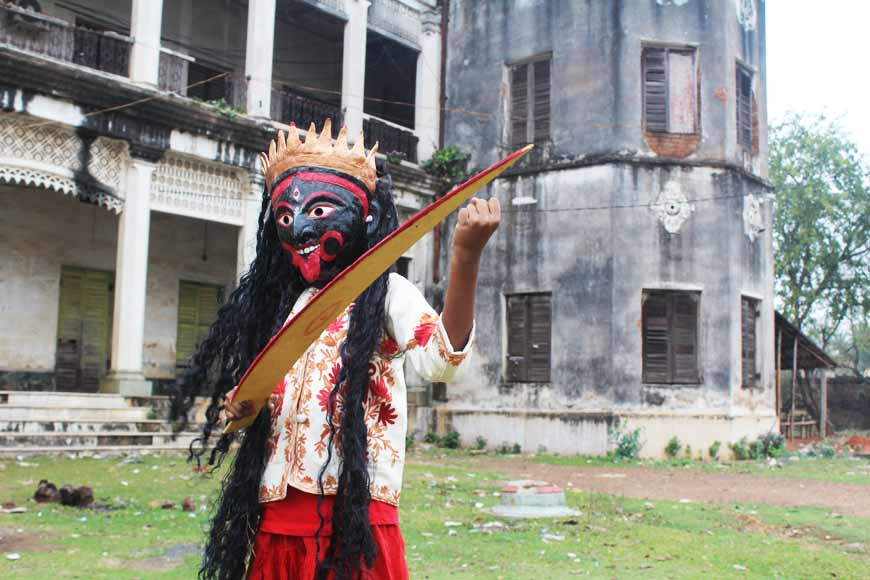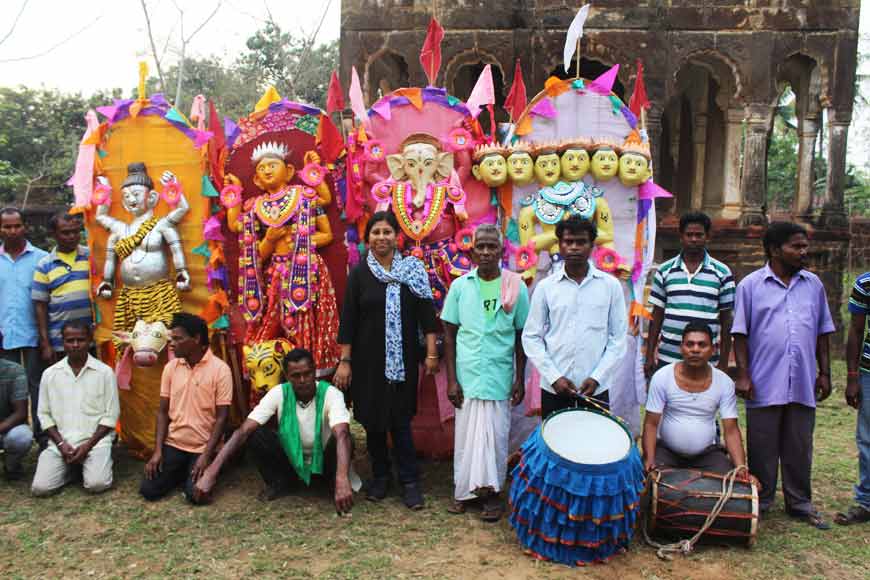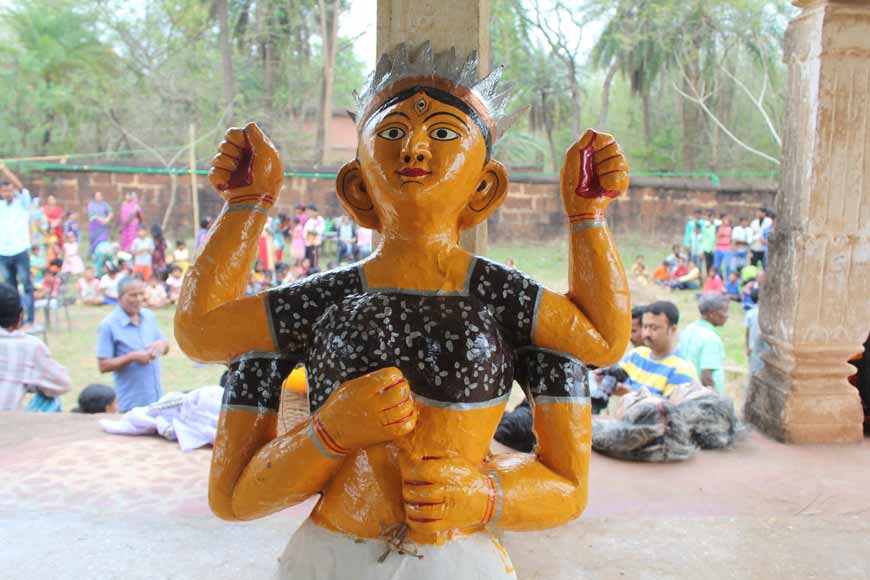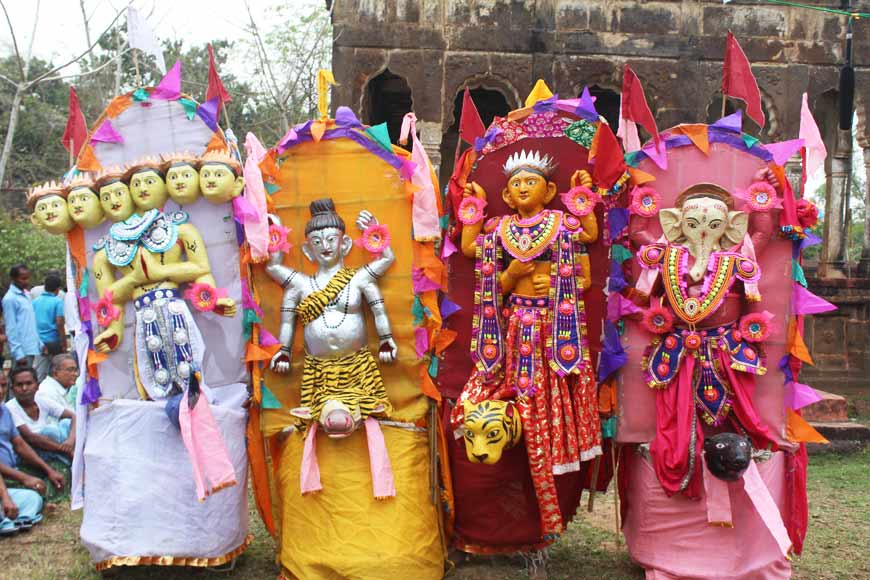What is Parbha Chhau, and why I wanted to make a film on it

While masks have become an indispensable part of our daily lives due to the ongoing pandemic, a dance form unique to Bengal, called Parbha Chhau, has made use of masks since ages. But today, this dance form is facing a grave existential crisis. This traditional Chhau, unlike others, is on the verge of fading into oblivion. This prompted me to make my 47-minute documentary, Parbha Chhau-Er Sandhane (In Search of Parbha Chhau).
Unlike other forms such as Purulia Chhau, Saraikela Chhau, and Mayurbhanj Chhau, which have earned accolades worldwide - the important form of Parbha or Chilkigarh traditional Chhau, has been lost in its existential crisis. But this is one of the most beautiful folk forms, and is over 200 years old, where the dancers are adorned with unique masks of one-piece wood, from head to waist, once carved by the carpenters of Odisha.

Raja Mangovinda Dhabaldev of the Dhabaldev dynasty brought this dance form into existence in the middle of the 18th century. It was generally performed by the working male folk of the princely state. Surprisingly, one of the princesses of this household knew the dance form and performed it, breaking the norms of the ‘raj gharana’. The exclusive masks, the musical accompaniment, and the typical beats set this form apart from the more popular Purulia and Saraikela Chhau.
The urge to discover the origins of Parbha Chhau took me to the remote villages of Medinipur. In 2018, I travelled to Jhargram and witnessed a rehearsal of Purulia Chhau. During that rehearsal, the prince of Jhargram Rajbari had told me about the Parbha Chhau dance at Chilkigarh, which is their maternal home.
The starting point for tracing its roots was Birojesh Chandra Dhabaldev, the current prince of Chilkigarh and a descendant of the Dhabaldev dynasty, which once ruled in the Singhbhum area. Parbha had emerged as a dance form in the royal palace of Chilkigarh and was widely endorsed and patronised by the kings of the Dhabaldev dynasty. During the course of the documentary, Birojesh Chandra narrates the history of Parbha and how it was linked to his family. Apart from highlighting stories from mythology or warfare, this dance form also narrates the lives of ordinary people. That makes the subject more interesting.

Needless to say, it took a great deal of research to locate two elderly dancers who could give me a fair idea about the essence of this form. One of them was 72-year-old Bhuban Khamrui, whose father used to be a guard at the royal palace of Chilkigarh. I also met 80-year-old dancer Samarendra Dhabaldev, who was related to the royal family, and dreamed of witnessing the revival of Parbha. Unfortunately, he died last year.
Of the 13 masks that were integral to this dance form, only 11 have survived. Two of them were destroyed in an accidental fire in the 1980s. Those that survived were handed over to the West Bengal government for preservation. Birojesh Chandra has some VHS tapes containing recordings of past dance performances. Unfortunately, I couldn’t retrieve anything from those tapes. On further research, I got in touch with some young dancers of Dubra village. These youngsters have been able to hold on to the basic structure of the dance form. However, we couldn’t find anyone who knew how to play the complicated rhythms used in Parbha.
The documentary has been screened at various festivals in the UK and US. That apart, it was screened at Rollout Dance Film Festivals Macau in China and won the Best Documentary award at Cinema4screen Film Festival in Mumbai, as well as a special mention at Cinemaking Dhaka Festival. Now, it has been selected for KIFF.
Through this documentary, I wanted to create awareness about a traditional form and its unsung artists. The purpose of the documentary is not only to highlight a traditional, 200-year-old dance form, but also to throw light on the rare artefacts and the artists who never found recognition. If the form can be restored, the artists will sustain their livelihoods, and their hard work to train succeeding generations will be worthwhile.

Thanks to KIFF, whose selection of my film will help make the dying art form more popular among the masses. I always believe hope is the companion of power and the mother of success. Even if all the windows are closed in a room, there will be one ventilator open. Creativity is never a dying art, it will regenerate and regrow on a better platform, opening new venues for the betterment of future generations.
Parbha Chhau-er Sandhane (In Search Of Parbha Chhau) is scheduled for screening at Nandan III on Sunday, May 1, in the 3.00 pm onward slot. For details, please visit the official KIFF website











